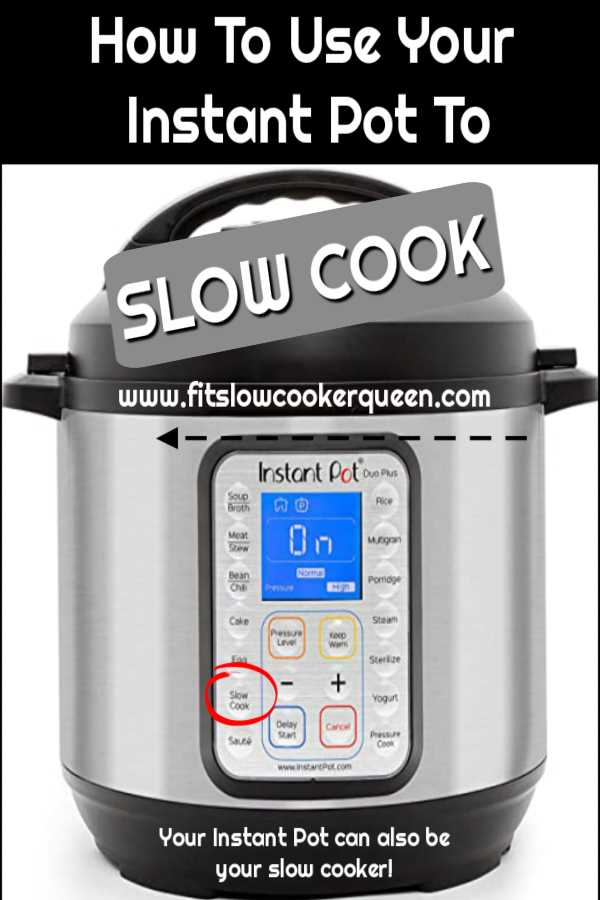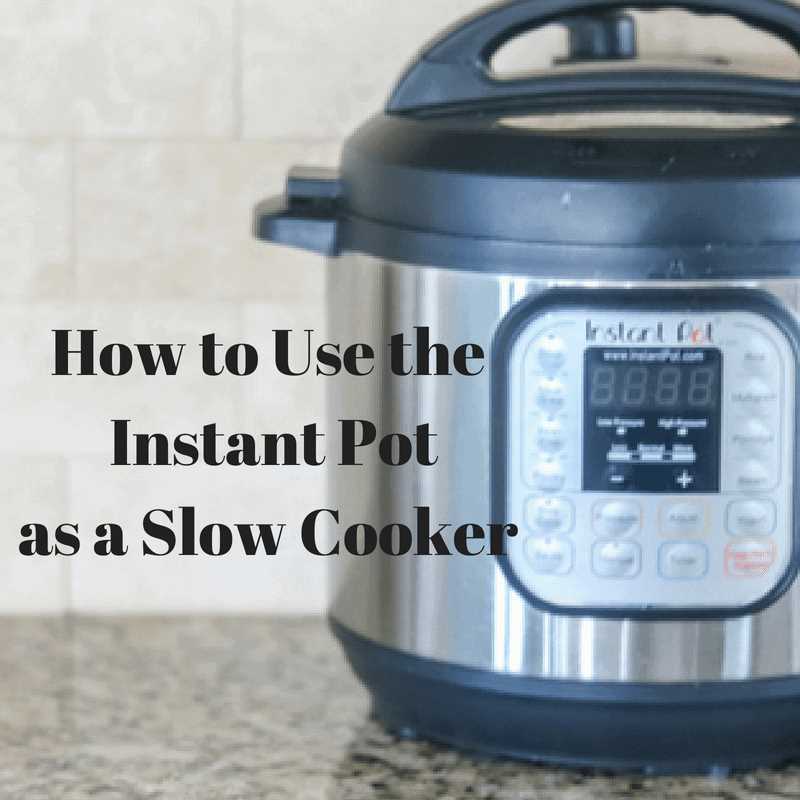Pressure cookers are known for their ability to cook meals quickly and efficiently. However, many people wonder if they can be used to slow cook as well. The answer is yes, you can slow cook in a pressure cooker, but it may require some adjustments to the cooking time and technique.
When using a pressure cooker for slow cooking, it’s important to keep in mind that the cooking time will be shorter compared to a traditional slow cooker. This is because the pressure cooker uses high pressure and steam to cook food faster. However, with some tweaks, you can achieve similar results.
One way to slow cook in a pressure cooker is by using the “slow cook” function, if your pressure cooker has one. This function allows you to set the cooking time and temperature manually, mimicking the cooking style of a traditional slow cooker. It’s essential to follow the manufacturer’s instructions for this setting and adjust the cooking time according to your recipe.
If your pressure cooker doesn’t have a dedicated slow cook function, you can still achieve slow cooker-like results by using the “low pressure” setting. By cooking at a lower pressure, you can extend the cooking time and achieve tender, flavorful dishes. However, keep in mind that the cooking time will still be shorter compared to a conventional slow cooker.
In conclusion, while pressure cookers are primarily designed for fast cooking, they can also be used for slow cooking. By adjusting the cooking time and technique, you can enjoy the convenience of a pressure cooker while still achieving delicious, slow-cooked meals.
What is a pressure cooker?
A pressure cooker is a cooking appliance that uses high pressure to cook food quickly. It consists of a sealed pot with a valve that controls the amount of pressure inside. When the pot is heated, the steam created raises the pressure inside the pot, cooking the food faster than traditional methods.
Pressure cookers are commonly used for cooking foods that usually take a long time to cook, such as beans, grains, and tough cuts of meat. They can also be used for canning fruits, vegetables, and preserves.
How does it work?
When the pressure cooker is heated, the liquid inside boils and creates steam. As the steam forms, it increases the pressure inside the pot. The high pressure and temperature allow the food to cook at a quicker pace.
The valve on the pressure cooker regulates the pressure inside. It releases excess steam and maintains a safe pressure level. Once the food is cooked, the pressure can be released by either letting the steam release naturally or by using the quick release valve.
Benefits of using a pressure cooker
There are several benefits to using a pressure cooker:
- Shorter cooking time: Pressure cookers can significantly reduce cooking time, making it a time-saving option for busy individuals.
- Energy efficiency: The high heat and pressure reduce the cooking time and energy required for cooking.
- Preserves nutrients: The shorter cooking time helps to retain the nutrients in the food, resulting in healthier meals.
- Tenderizes tough cuts of meat: The high pressure helps to tenderize tough cuts of meat, making them more flavorful and easier to eat.
- One-pot cooking: Pressure cookers allow for cooking multiple ingredients in one pot, minimizing the cleanup required.
How does a pressure cooker work?
A pressure cooker is a kitchen appliance used for cooking food quickly by using high pressure and steam. It works by trapping steam inside a sealed pot, which raises the internal temperature and pressure. This increased pressure allows the food to cook faster than traditional cooking methods.
Pressure cookers typically consist of a pot with a locking lid, a steam vent, and a pressure valve. The pot is filled with food and a small amount of liquid, such as water or broth. The lid is then locked in place, creating a tight seal. As the pot heats up on the stove, the liquid inside turns into steam, which cannot escape due to the sealed lid.
As the steam builds up inside the pressure cooker, the pressure and temperature increase. This increase in pressure raises the boiling point of the liquid, which in turn cooks the food faster. The high pressure also causes the food to retain more moisture, resulting in tender and flavorful dishes.
To control the pressure inside the cooker, pressure cookers are equipped with a pressure valve. This valve allows excess steam to escape, maintaining a constant pressure. The pressure valve can be adjusted to change the cooking pressure or release steam during the cooking process.
Most modern pressure cookers also have additional safety features, such as a locking mechanism that prevents the lid from being opened until the pressure is released. This ensures that the user doesn’t accidentally open the cooker while it is still under pressure, preventing any potential accidents.
Benefits of using a pressure cooker:

- Time-saving: Pressure cookers can cook food up to 70% faster than traditional cooking methods. This makes them a time-saving option for busy individuals or families.
- Nutrient retention: The shorter cooking time in a pressure cooker helps to preserve the nutrients in the food, making it a healthier cooking method.
- Tender and flavorful dishes: The high pressure and steam help to break down tough meat fibers and infuse flavors into the food, resulting in tender and flavorful dishes.
- Energy efficiency: Pressure cookers use less energy compared to traditional cooking methods, as the cooking time is significantly reduced.
Conclusion
Pressure cookers are a versatile and efficient kitchen appliance. By utilizing high pressure and steam, they can cook food quickly while retaining nutrients and enhancing flavors. Whether you’re looking to save time, cook healthy meals, or create tender dishes, a pressure cooker is a valuable addition to any kitchen.
Benefits of using a pressure cooker
A pressure cooker is an essential kitchen appliance that offers numerous advantages. Here are some key benefits of using a pressure cooker:
1. Time-saving: Pressure cookers can significantly reduce cooking time compared to traditional cooking methods. They use high-pressure steam to cook food quickly, allowing you to prepare meals in a fraction of the time.
2. Energy-efficient: Pressure cookers require less energy to operate due to their shorter cooking time. This makes them an eco-friendly choice and helps to save on utility bills.
3. Retains nutrients and flavors: Since pressure cookers cook food quickly, they help to retain more vitamins and nutrients in the food. Additionally, the sealed environment prevents evaporation, resulting in richer and more flavorful dishes.
4. Versatility: Pressure cookers can be used for a wide variety of cooking tasks such as boiling, steaming, braising, and even baking. This versatility makes them a valuable tool in the kitchen.
5. Tenderizes tough cuts of meat: The high pressure and steam in a pressure cooker help to break down tough connective tissues in meat, resulting in tender and juicy dishes. This makes it perfect for cooking cheaper cuts of meat that would normally require long cooking times.
6. Safety features: Modern pressure cookers come equipped with safety features like pressure release valves and locking systems. These features help to prevent accidents and ensure a safe cooking experience.
7. Easy to use: Pressure cookers are straightforward to use, even for beginners. They typically feature simple controls and require minimal monitoring during the cooking process.
In conclusion, using a pressure cooker can save you time and energy while creating delicious and nutritious meals. Its versatility and ability to tenderize while retaining flavors make it a valuable addition to any kitchen.
Tips for slow cooking in a pressure cooker

Slow cooking in a pressure cooker is a convenient and time-saving method to create delicious and tender meals. Here are some tips to help you make the most out of this cooking technique:
1. Choose the right cuts of meat: Opt for cuts that are tougher and require longer cooking times to become tender, such as chuck roast, beef brisket, or pork shoulder.
2. Brown the meat: Before adding the meat to the pressure cooker, sear it on all sides in a hot pan. This step adds flavor and helps retain moisture during the cooking process.
3. Use the trivet: Place a trivet or rack inside the pressure cooker to elevate the food. This prevents the ingredients from sticking to the bottom and allows for even cooking.
4. Add enough liquid: Unlike traditional slow cooking methods, pressure cooking requires less liquid because there is minimal evaporation. However, make sure to add enough liquid to create steam and prevent the food from drying out.
5. Adjust cooking times: Slow cooking in a pressure cooker typically requires less time than traditional methods. Follow the recipe guidelines and adjust the cooking times accordingly to achieve the desired level of tenderness.
6. Don’t overcrowd the pressure cooker: Leave enough space for the steam to circulate and build pressure. Overcrowding can lead to uneven cooking and longer cooking times.
7. Let the pressure release naturally: Slow cook recipes often benefit from a natural pressure release to allow the flavors to meld and the meat to become even more tender. Follow the recipe instructions for the recommended release method.
8. Use the “Keep Warm” function: After the cooking time is up, you can keep the food warm in the pressure cooker using the “Keep Warm” function. This helps to maintain the optimal temperature for serving.
By following these tips, you can enjoy the convenience of slow cooking in a pressure cooker and still achieve the same flavorful and tender results.
Questions and answers
Can you use a pressure cooker as a slow cooker?
Yes, you can use a pressure cooker as a slow cooker. Many pressure cookers have a “slow cook” function that allows you to cook food at a lower temperature for a longer period of time.
What is the difference between slow cooking and pressure cooking?
The main difference between slow cooking and pressure cooking is the time it takes to cook food. Slow cooking involves cooking food at a low temperature for a longer period of time, while pressure cooking uses high pressure and steam to cook food quickly.
Can you cook a pot roast in a pressure cooker?
Yes, you can cook a pot roast in a pressure cooker. Pressure cooking is actually a great way to cook a pot roast because it helps to tenderize the meat and infuse it with flavor in a shorter amount of time.
How long does it take to slow cook in a pressure cooker?
The cooking time for slow cooking in a pressure cooker will vary depending on the recipe and the specific pressure cooker you are using. However, on average, it can take anywhere from 4 to 8 hours to slow cook food in a pressure cooker.
Are there any disadvantages to slow cooking in a pressure cooker?
While there are many advantages to slow cooking in a pressure cooker, such as reduced cooking time and tenderized meat, there are also a few disadvantages. One disadvantage is that you may have less control over the cooking process compared to using a traditional slow cooker. Additionally, some people find that certain dishes don’t turn out as well when using a pressure cooker for slow cooking.
Can you slow cook in a pressure cooker?
Yes, you can slow cook in a pressure cooker. Most modern pressure cookers have a slow cooking setting that allows you to cook food at a lower temperature over a longer period of time, similar to a traditional slow cooker.
How does slow cooking in a pressure cooker work?
When you use the slow cooking setting on a pressure cooker, the appliance regulates the temperature and releases pressure intermittently to maintain a steady, low cooking temperature. This allows food to cook slowly and evenly, resulting in tender and flavorful dishes.






